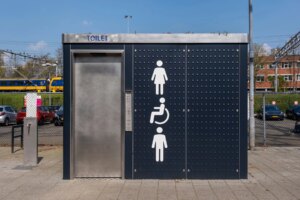Anyone who has lived in Holland for any length of time has most likely encountered a Dutch circle party and those who have not will eventually, it is inevitable. A Dutch circle party (the name is not a euphemism) can be best described as a ‘party’ that involves sitting in a circle all afternoon and chatting while drinking tea and eating cake. Anyone who only considers a party to be a party if someone is passed out in the corner, people are making out in the kitchen and the cops have been called at least three times is going to be sorely disappointed.
How to greet someone at a Dutch circle party
When attending a Dutch circle party it is important to know that when other attendees shake your hand and announce ‘Gefeliciteerd’ they are not introducing themselves. It might start to seem like you are being introduced to a very big family or that gefeliciteerd is a more common name than Smith but they are in fact wishing you ‘congratulations’.
“Gefeliciteerd.”
Stuart: “Nice to meet you Mr and Mrs Gefeliciteerd.”
This is because it is custom for the Dutch to congratulate everyone at the circle party and (as I discovered) is not because they are unsure about who the birthday boy or girl is (don’t try to be helpful by pointing).
Once you have successfully found a place to sit within the circle (not necessarily with the people you arrived with and most likely with people you don’t know at all) you will be offered a drink and some cake. If you desire a drink with a little extra kick it is advisable to secretly conceal a hip flask of alcohol about your person since the strongest thing to be served at most Dutch circle parties is chamomile tea.
Ways to interact at parties in the Netherlands
It is also customary for there to be a minimum of three or four generations of family present at a Dutch circle party (the maximum limit is only set by the average human life span). This makes it entirely possible to go from a conversation about life as a member of the Dutch resistance during WW2 to which Sesame Street character is best and why (it’s best to avoid getting these two conversations mixed up).
However, since a lot of these exchanges will be in Dutch, and thus impossible for a non-Dutch speaker to follow, it is best to find something of interest to do to pass the time such as; staring at a wall, listening to the clock tick, trying to guess how much Dutch ‘worst en kaas’ you can eat or simply, going to your ‘happy place’.
However, you must also stay alert! As a non-Dutch speaker it is possible to go from being unintentionally ignored to suddenly having the entire room focus upon you within a split second as everyone waits silently for your answer a question that you might not have heard because you were too busy watching a bug crawl across the window. This can happen because a Dutch attendee simply wanted to practice their English, ask you what brought you to Holland or simply know the current prices of the UK housing market. Whatever the reason, everyone in the room suddenly wants to hear the English speaker talk and they never seem to realize what a shock to the system this sudden intimidating attention can be or that testing us on our Dutch under the watchful eye of a room full of native speakers is not necessarily the most comfortable of situations.
But do not worry. Most Dutch circle parties have a set end time, at a very respectable hour, which the host or hostess will politely remind you of by starting to clean up around you.
PARRTTTYYYY!!!!!







